How James Crumbley's DoorDash runs came back to haunt him in Michigan shooting trial
Prosecutors in the involuntary manslaughter trial of James Crumbley have argued that he failed to do the "smallest of things" that could have saved four children's lives — such as taking a break from his DoorDash job after he and his wife were summoned to Oxford High School on the day of the shooting.
That's one of the seeds they planted in the jury's mind Friday as they sought to drive home this message: Had James Crumbley taken a work break in the hours before his son shot up Oxford High School, he would have discovered that the gun the teen had long begged for was missing.
But he didn't, Assistant Prosecutor Marc Keast argued to jurors Friday, noting that James Crumbley drove past his house four times while making DoorDash runs in the hours after he saw a violent drawing that his son had made that morning in geometry class. The drawing included a gun, a bleeding human body and the words, "The thoughts won't stop. Help me."
The parents were summoned to the school over the drawing, and went back to their jobs after a brief meeting in the counselor's office, promising to get him help within 48 hours. Their son went back to class.
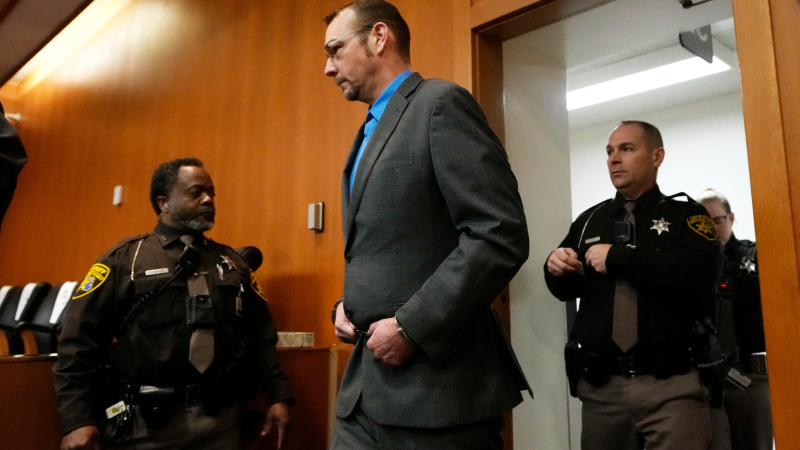
'Never once did he stop at home?'
Two hours later, at the moment his dad received his fourth DoorDash order from Tropical Smoothie Cafe at 12:51 p.m., the teenager emerged from a bathroom and fired his first shot.
In rehashing the timeline of Nov. 30, 2021, the day of the massacre, Keast turned the jury's attention to the troubling drawing.
"He drove past his house four times from the time he saw this," he said, referring to the drawing, "and never once did he stop at home?"
"No, he did not," answered the prosecution's witness, former Oakland County Sheriff Detective Edward Wagrowski, who investigated the Crumbley family's actions before and after the shooting.
Crumbley is facing four counts of involuntary manslaughter for buying his son the gun the teen used in the mass shooting at Oxford High and not disclosing that detail to school officials when given the opportunity. His trial comes one month after his wife, Jennifer Crumbley, was convicted of the same charges and became the first parent in America to be held responsible for a mass school shooting commited by their child. The shooter, Ethan Crumbley, pleaded guilty to all his crimes and is serving life without parole.
Slain the rampage were Tate Myre, 16; Hana St. Juliana, 14; Madisyn Baldwin, 17, and Justin Shilling, 17.
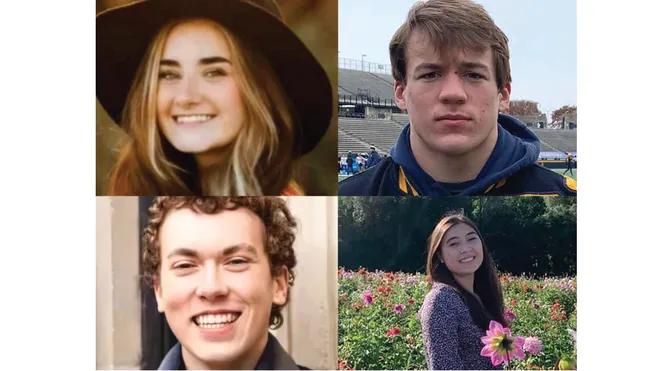
The prosecution has portrayed James Crumbley as a careless and neglectful father who bought a troubled son a gun and failed to secure it, while the defense maintained that the father never saw any signs that his son was dangerous or mentally ill, and that he did not know of his son's plans to shoot up his school or that the teen had access to the gun.
Friday's testimony opened with Crumbley's attorney Mariell Lehman cross-examining Wagrowski, who also evaluated text messages, phone calls and social media accounts of the Crumbley family.
Lehman spent much of her time questioning the detective about what he did not know. Specifically, she got him to concede that he found no evidence that James Crumbley knew about the troubling texts his son was sending his friend late at night in the months before the shooting, when the boy alleged he was asking his parents in vain for help with mental health issues, including hearing voices.
For example, Lehman asked him about a text the shooter sent his friend on April 4, 2021, which reads: "I actually asked my dad to take me to the doctor the other day, and he just gave me some pills and said to 'suck it up.' My mom laughed when i told her."
On cross-examination, Wagrowski conceded that he does not know if James Crumbley ever saw or knew about that text, and that he found no evidence that the boy actually did ask to go to the doctor — other than him saying so in the text — and that he does not know what kinds of pills to which the boy might have been referring.
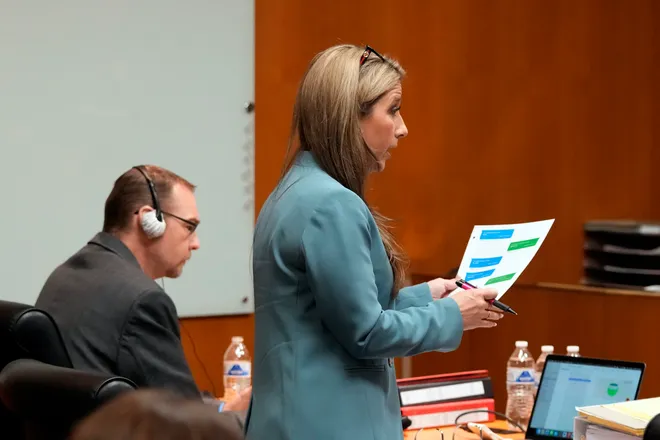
Lehman suggested it could be Tylenol, while Wagrowski suggested it could be Xanax, given other communications the parents had.
But Lehman countered that a conversation involving Xanax was from a different time period and that the parents actually discussed giving him melatonin.
Lehman also asked Wagrowski to explain how much he really knows about a video the shooter sent to his friend in the summer of 2021, in which the boy's hand is seen clicking a gun and loading a magazine into it.
'You don't know; that's my point'
"You don’t know if James is next to his son, across from his son," or if he was in the room or even heard anything when this happened, Lehman asserted.
Wagrowski said he did not have that information, though he opined that in a house as small as the Crumbleys', that a clicking sound could have been heard.
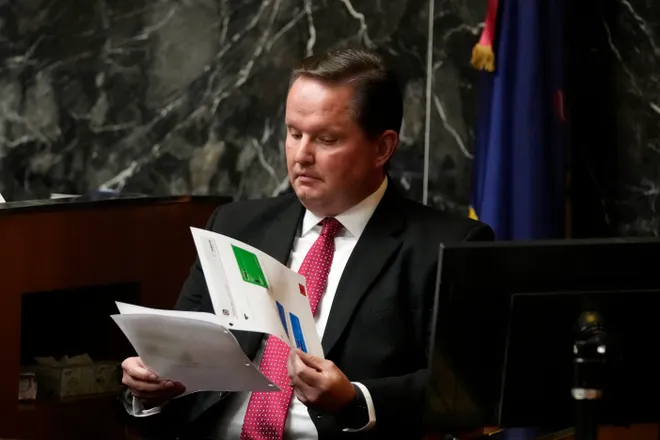
"You don't know; that's my point," Lehman said.
Lehman also asked Wagrowski about an Instagram post that the shooter made on the day his dad purchased the gun that he would use four days later in the massacre. The post reads: "Just got my new beauty."
Lehman asked Wagrowski if there is anything to show that James Crumbley saw this post. No, he answered.
She also asked him about social media posts by his wife and son that included pictures of the two at a shooting range.
"There’s nothing illegal or improper about taking your child to a shooting range, or posting photos of the target that you use," she said.
No, the detective answered.
Lehman also questioned him about perhaps the most damning evidence in the case: the troubling drawing the shooter made on his math worksheet on the morning of the shooting, the one that led to his parents being summoned to the school.
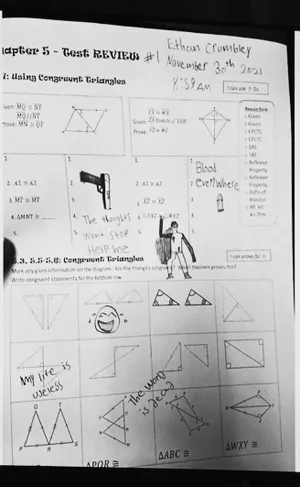
"James obviously expressed some concern," Lehman said, referring to the text he sent his wife after first seeing that drawing that said: "my god, wtf."
Lehman did not question the witness about what happened in the school counselor's meeting that day with the parents, as the detective said he didn't know details about that meeting.
But she did address other actions of James Crumbley that day, noting that after an active-shooter alert went out, he drove to a Meijer parking lot, which was the reunification center for parents and kids, and called his son two times. He didn't know the boy was in custody already.
James Crumbley also called his wife and then drove home and called 911.
"In that 911 call he told the dispatcher that he saw and heard the sirens, he said that he went to the Meijer, that his son was a student, that he heard that there was a shooting, that he discovered that his son was missing, that he didn’t know if his son took the gun, and that he was freaking out," Lehman said.
"That is correct," Wagrowski said.
Assistant principal brings Crumbley to tears — 'He was a sweet kid'
Jurors also heard from Kristy Gibson-Marshall, the assistant principal at Oxford High School who came into contact with the shooter during his rampage. According to her testimony, after the school went into lockdown, she ventured down a hallway toward the sound of gunfire and came upon the gunman.
“The shooter was coming close to me. As he got close, I saw that it was Ethan,” Gibson-Marshall said, adding she was surprised as she had known him since middle school. “He was a sweet kid.”
“I asked if him if he was OK,” she recalled. “He looked away from me.”
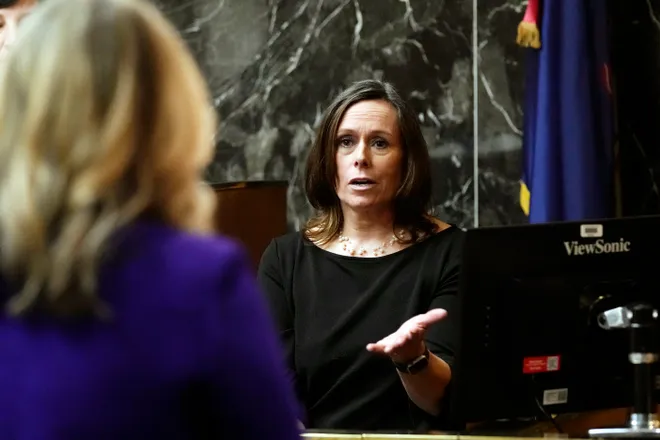
That also was unlike Ethan Crumbley, she said, adding: “He would have talked to me.
“He kept walking. I walked with him for a couple of steps and then I turned my back on him because I had a student that I needed to check on.”
That student was Tate Myre, who was lying face down near a trash can. He had been shot in the head, she said, but still had a pulse.
“His mom was my PTO president,” Gibson-Marshall said while choking up. “I began to give him rescue breaths … I continued until they took him from me.”
Myre did not survive.
During her testimony, James Crumbley became emotional, wiping tears from his eyes even after she left the stand.
Gun store manager tells of Black Friday sale
Jurors also heard from Cammy Back, office manager at Acme Shooting Goods in Oxford, where James Crumbley went on a Black Friday shopping trip with his son and bought a 9mm Sig Sauer, the gun that was used in the school massacre.
Back testified that James Crumbley was a “familiar face” at the store and that he had purchased two guns there in June 2021. She said that when he came into the store, he had a young person with him and asked to see the Sig Sauer, telling her he "had had his eye” on it.
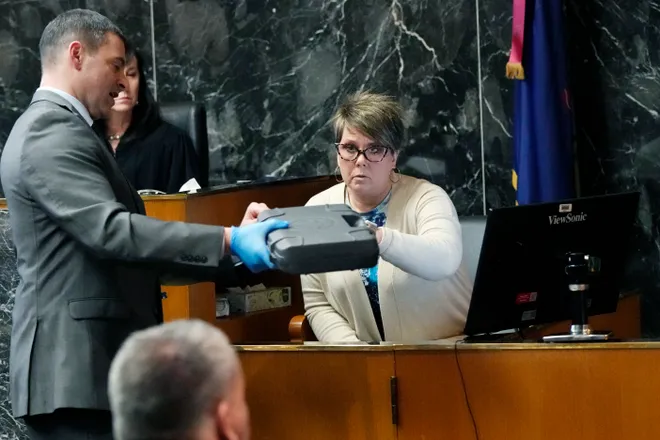
Jurors saw a portion of a firearms transaction record, which showed James Crumbley checking the box indicating that he was the actual buyer of the gun. The record included a warning on bold: “You are not the actual transferee/buyer if you are acquiring the firearm(s) on behalf of another person. If you are not the actual transferee/buyer, the licensee cannot transfer the firearm(s) to you.”
Back also testified that the Sig Sauer came in a plastic case that did not have a lock mechanism on it, but a cable lock was provided with the gun purchase. She also said she didn’t see any conversations between James Crumbley and his son while they were at the store.
On cross-examination, Lehman asked Back if there is anything illegal about a dad going to a gun shop with his son, or a minor going to the shooting range with a parent.
No, she answered.
On redirect questioning, Keast asked the gun shop manager if James Crumbley's son had walked into the store that day and said "'Hey dad, that's the one I want,' would you have sold it to him?' "
No, she answered.
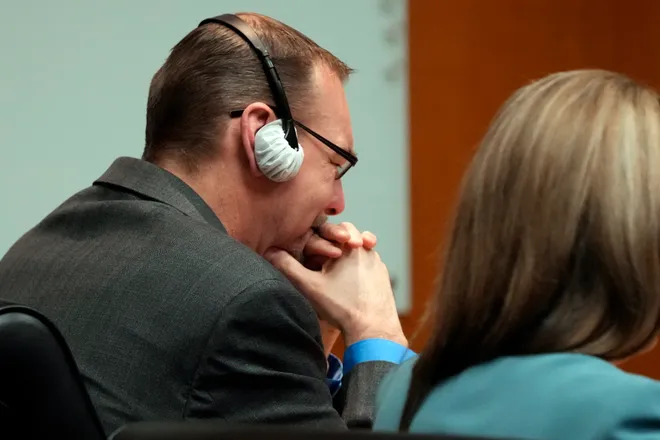
James Crumbley has maintained that the gun was not actually a gift and that it came with rules, such as the boy was only allowed to use it at the shooting range with a parent. Jurors also saw a video of James Crumbley explaining this to investigators in the hours after the shooting.
"We go to the shooting range all the time," James Crumbley is heard saying in the video. "I try to teach him safety."
Jurors see video of Crumbley sobbing
The prosecution showed the jury a video of James and Jennifer Crumbley speaking with investigators at a sheriff's substation in the hours after the shooting.
Jennifer Crumbley remarked that they had just been at the school that morning and said their son had “never done anything bad.” As James Crumbley started talking about how their son had been “doodling” on a test or a practice test, his wife interrupted and asked if they should get a lawyer.
James Crumbley told her: “I think we can speak to the cops.”
They talked about meeting with the school counselor and Jennifer Crumbley said she texted her son that afternoon to see if he was OK. He texted her back that he had just gotten back from lunch and that he loved her.
Asked whether their son had any issues, James Crumbley told the investigators “not that we know of,” adding that his son’s best friend was sent out of state over health concerns, that their dog had recently died and that James' mom had passed away earlier that year.
James Crumbley could also be heard saying their son was “the perfect kid” and didn’t get in trouble. He told investigators the gun had been hidden in their armoire, in a case, and the bullets were hidden in a different spot underneath jeans.
After he learned there was an active shooter at the school and saw the cops, he said he immediately raced home, found the gun missing and called police.
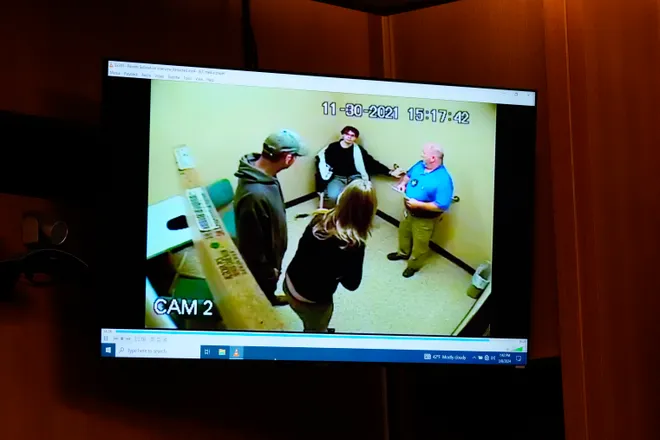
Video also was shown of the couple being led into a room where their son was handcuffed to a wall. James Crumbley is sobbing, and tells his son repeatedly, "I love you," though the prosecutor suggested that the father was trying to cover up the sounds of his son, who was saying: "I did it."
Testimony resumes Monday.
Will the father testify?
To date, there is no indication that James Crumbley will testify, as his wife did in her trial. In fact, his lawyer asked nearly every prospective juror if they thought they needed to hear from James Crumbley, and if they would hold it against him if he didn't take the stand.
All said they understand the presumption of innocence and would not hold it against James Crumbley if he exercises his right to remain silent.
Contact Tresa Baldas: tbaldas@freepress.com. Contact Gina Kaufman: gkaufman@freepress.com. Follow her on X: @ReporterGina.
Disclaimer: The copyright of this article belongs to the original author. Reposting this article is solely for the purpose of information dissemination and does not constitute any investment advice. If there is any infringement, please contact us immediately. We will make corrections or deletions as necessary. Thank you.




